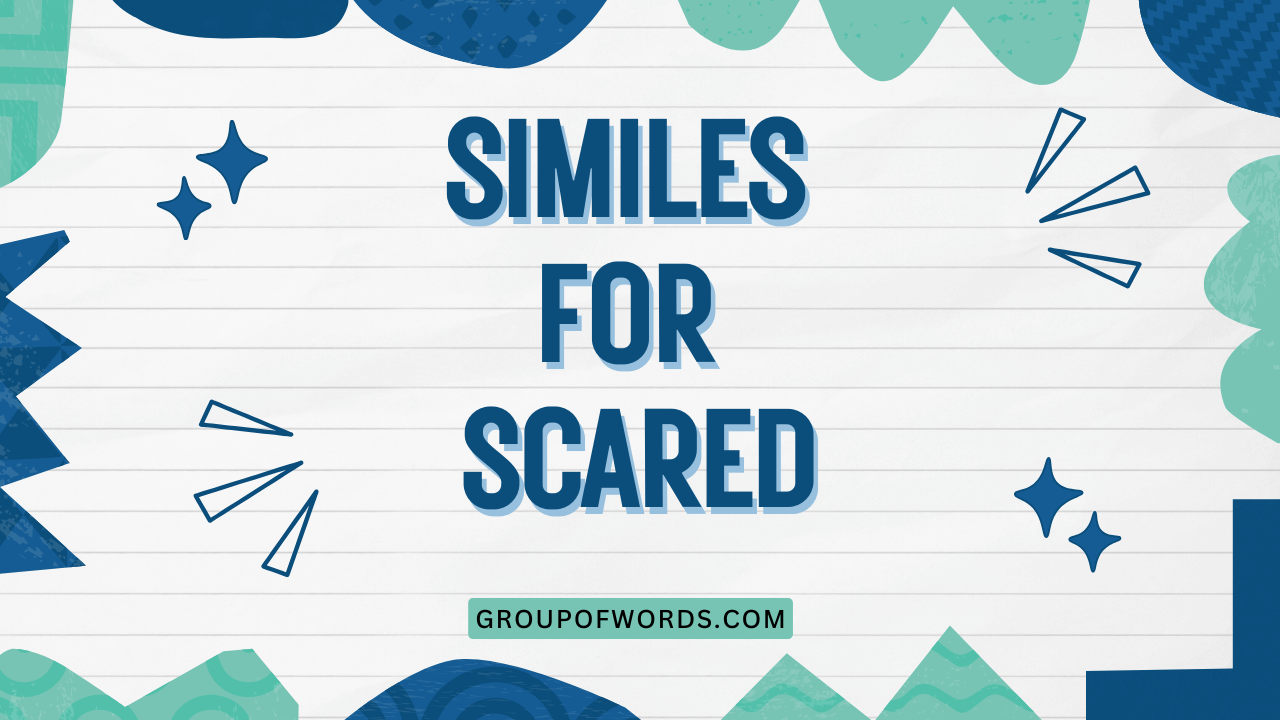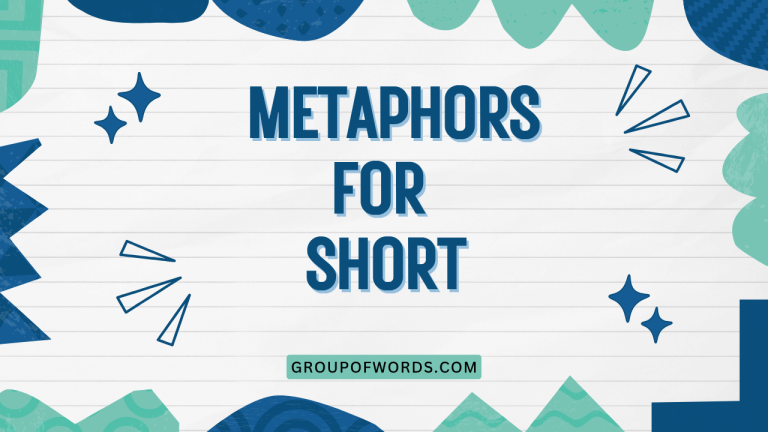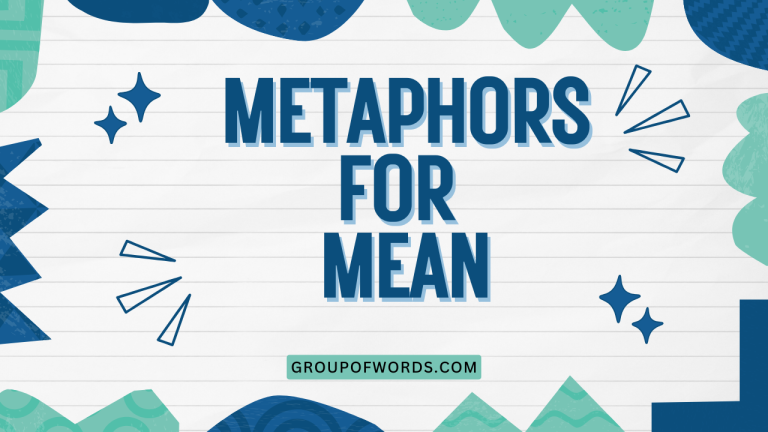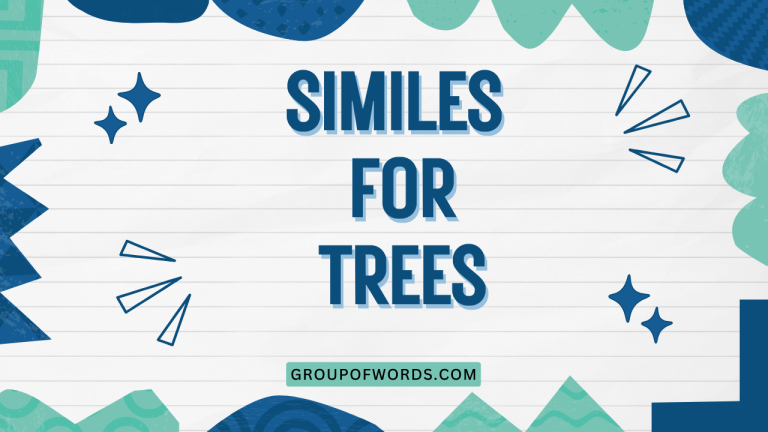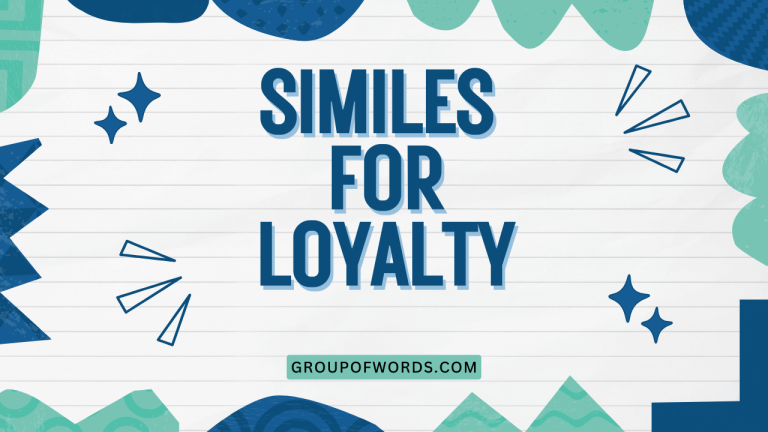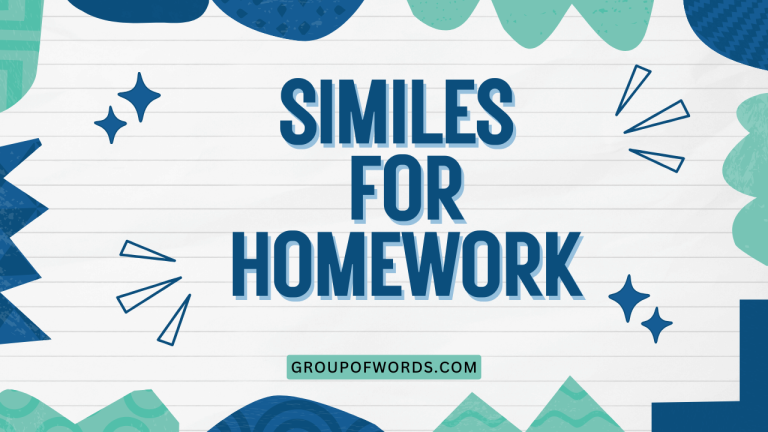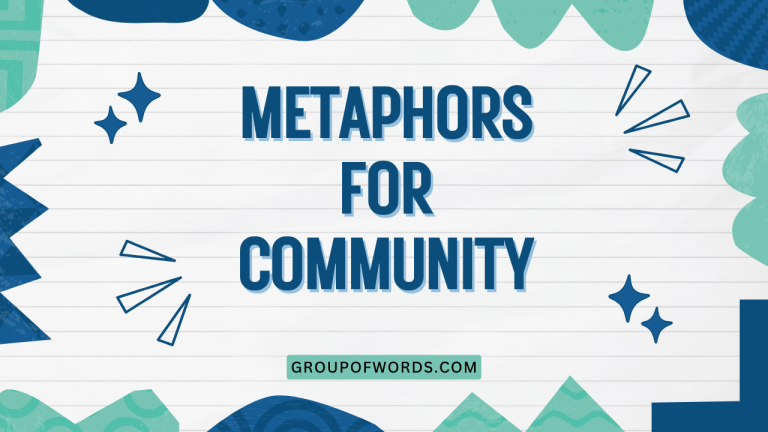Similes for Scared: Enhancing Your Descriptive Language
Understanding and using similes effectively can significantly enhance your descriptive writing, allowing you to paint vivid pictures with your words. When describing fear, a range of similes can capture the intensity of the emotion, making your writing more engaging and impactful.
This article explores various similes for “scared,” providing definitions, examples, and practical exercises to help you master their usage and integrate them seamlessly into your writing. Whether you’re a student, writer, or English language learner, this guide will help you expand your vocabulary and descriptive skills.
Table of Contents
- Introduction
- Definition of Simile and Its Role
- Structural Breakdown of Similes
- Types of Similes for Scared
- Examples of Similes for Scared
- Usage Rules for Similes
- Common Mistakes When Using Similes
- Practice Exercises
- Advanced Topics: Nuances and Subtleties
- Frequently Asked Questions (FAQ)
- Conclusion
Introduction
Similes are powerful tools for expressing emotions and creating imagery in writing. Describing fear can be challenging, but using effective similes can bring the feeling to life for your readers.
This article focuses on similes related to the emotion of fear, providing a comprehensive guide to understanding, identifying, and using them correctly. By exploring a variety of similes, you’ll learn how to convey different degrees and nuances of fear, making your writing more compelling and vivid.
This guide is perfect for anyone looking to improve their descriptive writing skills.
Definition of Simile and Its Role
A simile is a figure of speech that directly compares two different things, typically using the words “like” or “as.” The purpose of a simile is to create a more vivid and relatable image in the reader’s mind by associating an unfamiliar concept with something familiar. Similes add depth and color to writing, making it more engaging and memorable. They are a fundamental element of descriptive language and are widely used in literature, poetry, and everyday conversation.
In the context of describing fear, similes can help convey the intensity and specific characteristics of the emotion. For example, instead of simply saying “He was scared,” you could say “He was as scared as a mouse cornered by a cat,” which provides a much more vivid and impactful image.
The effectiveness of a simile lies in its ability to draw a strong connection between the feeling of fear and something the reader can easily visualize or understand.
Structural Breakdown of Similes
The basic structure of a simile consists of three main components: the subject being described (the feeling of fear in our case), the linking word (“like” or “as”), and the object or concept to which the subject is being compared. Understanding this structure is crucial for creating effective and grammatically correct similes.
Let’s break down each component:
- Subject: This is the thing being described. In our case, it’s the feeling of being scared.
- Linking Word: This connects the subject to the object of comparison. The most common linking words are “like” and “as.”
- Object of Comparison: This is the thing to which the subject is being compared. It should be something that the reader can easily visualize or understand, and it should share a relevant characteristic with the subject.
For example, in the simile “He was as pale as a ghost,” “He” is the subject experiencing fear (implied), “as” is the linking word, and “a ghost” is the object of comparison. The comparison highlights the paleness associated with fear, creating a vivid image.
By understanding this structure, you can create your own similes to effectively describe the feeling of being scared.
Types of Similes for Scared
Similes for “scared” can be categorized based on the type of imagery they evoke. Understanding these categories can help you choose the most appropriate simile for the specific context and desired effect.
Here are some common types of similes for scared:
- Animalistic Similes: These compare the feeling of fear to the behavior or state of animals.
- Physical Reaction Similes: These focus on the physical manifestations of fear, such as trembling or sweating.
- Environmental Similes: These use elements of the environment, such as darkness or storms, to convey fear.
- Abstract Similes: These compare fear to abstract concepts, such as silence or emptiness.
- Everyday Object Similes: These use common, everyday objects to illustrate the feeling of fear.
By exploring these different types of similes, you can gain a deeper understanding of the nuances of fear and learn how to express them more effectively in your writing. Each type offers a unique perspective on the emotion, allowing you to create a wide range of vivid and impactful descriptions.
Examples of Similes for Scared
Here are several examples of similes for “scared,” organized by category, to illustrate their variety and effectiveness. Each category provides unique ways to convey the feeling of fear, adding depth and color to your writing.
Exploring these examples will help you understand how to create your own similes and use them effectively.
Animalistic Similes
Animalistic similes often evoke primal instincts and vulnerability, making them particularly effective for describing intense fear. These similes draw on the inherent fear responses of animals to create a relatable and impactful image.
The following table provides a variety of animalistic similes for “scared,” along with explanations of their connotations and usage. These examples will help you understand how to use animalistic imagery to convey fear effectively.
| Simile | Explanation |
|---|---|
| As scared as a mouse cornered by a cat | Emphasizes vulnerability and imminent danger. |
| As frightened as a deer caught in headlights | Highlights the feeling of being paralyzed by fear. |
| Like a rabbit before a fox | Conveys a sense of helplessness and impending doom. |
| As timid as a newborn fawn | Suggests innocence and extreme vulnerability. |
| As jumpy as a cat on a hot tin roof | Implies nervousness and heightened alertness due to fear. |
| Like a bird with a broken wing | Shows feeling helpless and unable to escape danger. |
| As skittish as a wild horse | Indicates a tendency to panic easily. |
| Like a trapped wolf | Highlights desperation and the urge to escape. |
| As terrified as a lamb facing the slaughter | Conveys a sense of utter helplessness and impending death. |
| Like a snake cornered in a pit | Implies feeling trapped and threatened. |
| As wary as a field mouse near a hawk | Indicates a constant state of alert and fear. |
| Like a squirrel in traffic | Conveys a sense of being overwhelmed and disoriented. |
| As panicked as a flock of birds scattering | Highlights the contagious nature of fear. |
| Like a fish out of water | Shows feeling out of place and vulnerable. |
| As petrified as a turtle without its shell | Emphasizes extreme vulnerability and exposure. |
| Like a bee without its stinger | Conveys a sense of defenselessness. |
| As nervous as a long-tailed cat in a room full of rocking chairs | Indicates a high level of anxiety and potential danger. |
| Like a lion in a cage | Implies frustration and a desperate desire to escape. |
| As scared as a chick without its mother | Shows feeling lost and unprotected. |
| Like a lone sheep in the wilderness | Conveys a sense of isolation and vulnerability. |
| As hunted as a fox in winter | Highlights the feeling of being constantly pursued and in danger. |
| As jittery as a hummingbird | Suggests extreme nervousness and restlessness. |
| Like a caged tiger | Implies suppressed fear and an urge to lash out. |
| As frightened as a bat in daylight | Conveys a sense of being out of one’s element and vulnerable. |
| Like a worm on a hook | Shows feeling exploited and helpless. |
| As anxious as a cat around a vacuum cleaner. | Highlights a specific, yet common, fear response. |
| Like a dog during a thunderstorm. | Conveys a sense of overwhelming anxiety and helplessness. |
Physical Reaction Similes
Physical reaction similes focus on the bodily responses to fear, such as trembling, sweating, and a racing heart. These similes create a visceral connection with the reader by describing tangible symptoms of fear.
The following table provides examples of physical reaction similes for “scared,” highlighting the physical manifestations of fear. These examples will help you understand how to use physical sensations to convey fear effectively.
| Simile | Explanation |
|---|---|
| As pale as a ghost | Emphasizes the loss of color due to fear. |
| Trembling like a leaf | Highlights the uncontrollable shaking caused by fear. |
| Sweating like a marathon runner | Conveys the intense physical stress of fear. |
| Heart pounding like a drum | Indicates a racing heart due to anxiety. |
| As cold as ice | Suggests a chilling fear that numbs the senses. |
| Breath coming in gasps like a dying man | Shows difficulty breathing due to panic. |
| Voice as shaky as a newborn’s legs | Implies a loss of control over speech. |
| Knees weak like jelly | Conveys a feeling of physical instability. |
| As stiff as a board | Highlights the physical tension caused by fear. |
| Eyes wide like saucers | Indicates shock and disbelief. |
| Skin crawling like ants were underneath | Suggests a feeling of unease and disgust. |
| Mouth as dry as the desert | Conveys nervousness and dehydration due to fear. |
| Hands clammy like a fish | Indicates nervousness and anxiety. |
| As numb as if frozen | Suggests a loss of sensation due to extreme fear. |
| Muscles tight as wound springs | Highlights the physical tension caused by fear. |
| Stomach churning like a washing machine | Conveys nausea and anxiety. |
| As breathless as after a sprint | Indicates a shortness of breath due to panic. |
| Face flushed like a beet | Conveys embarrassment or intense fear. |
| As lightheaded as if spinning | Suggests disorientation and dizziness. |
| As shaky as a Polaroid picture developing | Implies visible trembling and instability. |
| Hair standing on end like needles | Highlights the physical manifestation of extreme fear. |
| As weak as water | Shows feeling physically powerless. |
| Jaw clenched as tight as a vice | Indicates suppressed fear and tension. |
| As dizzy as after a rollercoaster | Conveys disorientation and unease. |
| Throat as constricted as a noose | Suggests difficulty swallowing and speaking. |
| Shivering like an aspen leaf in the wind. | Highlights uncontrollable trembling. |
| As rigid as a statue. | Conveys a sense of being frozen with fear. |
Environmental Similes
Environmental similes use elements of the natural world to create a sense of unease and fear. These similes can evoke feelings of isolation, darkness, and danger, enhancing the reader’s emotional experience.
The following table provides examples of environmental similes for “scared,” drawing on natural elements to convey fear. These examples will help you understand how to use environmental imagery to create a sense of dread and unease.
| Simile | Explanation |
|---|---|
| As dark as a moonless night | Emphasizes the feeling of being lost and vulnerable. |
| Like a lone tree in a storm | Conveys a sense of isolation and impending danger. |
| As silent as a graveyard | Highlights the eerie quiet that can amplify fear. |
| Like a shadow in the corner of the room | Suggests an unseen and menacing presence. |
| As cold as a winter’s grave | Conveys a chilling fear that numbs the senses. |
| Like a leaf caught in a whirlwind | Shows feeling helpless and out of control. |
| As exposed as a mountain peak | Indicates vulnerability and lack of protection. |
| Like a boat lost at sea | Implies feeling disoriented and without direction. |
| As isolated as a desert island | Conveys a sense of loneliness and vulnerability. |
| Like a whisper in a hurricane | Shows feeling insignificant and overwhelmed. |
| As vulnerable as a sapling in a forest fire | Highlights the feeling of being threatened by a destructive force. |
| Like a pebble in an avalanche | Conveys a sense of being overwhelmed and powerless. |
| As adrift as a raft without a rudder | Indicates a lack of control and direction. |
| Like a house in a tornado alley | Shows feeling constantly threatened by danger. |
| As bleak as a barren landscape | Conveys a sense of hopelessness and despair. |
| Like a cave shrouded in darkness | Suggests the unknown and hidden dangers. |
| As fragile as thin ice | Indicates a precarious situation that could collapse at any moment. |
| Like a dust mote in a sunbeam | Shows feeling insignificant and exposed. |
| As empty as a hollow canyon | Conveys a sense of loneliness and desolation. |
| Like a ship navigating through a dense fog | Implies uncertainty and hidden dangers. |
| As quiet as the eye of a storm | Suggests a deceptive calm before impending chaos. |
| Like a desert without an oasis | Shows feeling without hope or relief. |
| As desolate as a forgotten ruin | Conveys a sense of abandonment and decay. |
| Like a single star in an infinite void | Implies isolation and insignificance. |
| As still as a pond before a storm | Suggests a sense of foreboding and anticipation. |
| As eerie as a graveyard at midnight. | Highlights the unsettling atmosphere. |
| Like walking through a haunted forest. | Conveys a sense of lurking danger and unease. |
Abstract Similes
Abstract similes compare fear to intangible concepts, such as silence, emptiness, or vulnerability. These similes can be particularly effective for conveying the psychological impact of fear, creating a sense of unease and dread.
The following table provides examples of abstract similes for “scared,” drawing on intangible concepts to convey fear. These examples will help you understand how to use abstract imagery to create a sense of psychological unease.
| Simile | Explanation |
|---|---|
| As silent as a secret | Emphasizes the hidden and unspoken nature of fear. |
| Like a void swallowing everything | Conveys a sense of emptiness and despair. |
| As fragile as a dream | Highlights the fleeting and easily shattered nature of security. |
| Like a whisper of doubt | Suggests a subtle but persistent unease. |
| As vulnerable as a newborn idea | Conveys the fragility and need for protection. |
| Like a memory fading away | Shows the fear of losing something precious. |
| As empty as a broken promise | Indicates a loss of trust and security. |
| Like a shadow lurking in the mind | Implies a persistent and unsettling presence. |
| As hollow as a lie | Conveys a sense of emptiness and deceit. |
| Like a secret fear buried deep | Shows the hidden and suppressed nature of fear. |
| As exposed as a raw nerve | Highlights extreme sensitivity and vulnerability. |
| Like a fragile hope in the dark | Conveys the precariousness of optimism in the face of fear. |
| As uncertain as a question unanswered | Indicates a lack of clarity and security. |
| Like a truth left unsaid | Shows the fear of confronting difficult realities. |
| As delicate as a spiderweb | Highlights the fragility and easily broken nature of security. |
| Like a fear taking root | Implies the growing and insidious nature of fear. |
| As transparent as a lie | Conveys the easily seen and recognized nature of fear. |
| Like a ghost of a memory | Shows the haunting and persistent nature of past fears. |
| As uncertain as a gambler’s bet | Indicates a risk and lack of control. |
| Like a nightmare replaying | Conveys the repetitive and tormenting nature of fear. |
| As fleeting as a shadow | Highlights the transient and elusive nature of fear. |
| Like a secret longing unfulfilled | Shows the fear of never achieving one’s desires. |
| As powerless as a thought unexpressed | Indicates a lack of agency and control. |
| Like a dream unremembered | Conveys the fear of losing something precious. |
| As distant as a star | Highlights the unattainable and remote nature of hope. |
| As invisible as anxiety. | Conveys the hidden and often overlooked nature of fear. |
| Like a weight on one’s soul. | Shows the burden and oppressiveness of fear. |
Everyday Object Similes
Everyday object similes use common, familiar items to illustrate the feeling of fear. These similes can make the emotion more relatable and accessible, allowing readers to easily connect with the experience of being scared.
The following table provides examples of everyday object similes for “scared,” drawing on familiar items to convey fear. These examples will help you understand how to use everyday imagery to create relatable and accessible descriptions of fear.
| Simile | Explanation |
|---|---|
| As fragile as glass | Emphasizes the easily broken nature of composure. |
| Like a house of cards | Conveys a sense of instability and impending collapse. |
| As tight as a drum | Highlights the tension and pressure caused by fear. |
| Like a ticking time bomb | Suggests impending danger and anxiety. |
| As sharp as a knife | Conveys the piercing and painful nature of fear. |
| Like a rusty hinge | Shows feeling stiff and unable to move freely. |
| As hollow as an empty shell | Indicates a loss of inner strength and vitality. |
| Like a broken record | Implies a repetitive and tormenting fear. |
| As tangled as a ball of yarn | Conveys a sense of confusion and disarray. |
| Like a flickering candle | Shows the weakness and vulnerability of hope. |
| As brittle as old bones | Highlights the fragility and vulnerability to harm. |
| Like a puppet on a string | Conveys a lack of control and manipulation. |
| As thin as paper | Indicates a lack of substance and strength. |
| Like a leaky faucet | Shows a persistent and irritating fear. |
| As delicate as a butterfly’s wing | Highlights the fragility and easily damaged nature of composure. |
| Like a deflated balloon | Conveys a sense of disappointment and loss of hope. |
| As unsteady as a wobbly table | Indicates a lack of stability and security. |
| Like a cracked mirror | Shows a distorted and fragmented sense of self. |
| As fragile as an eggshell | Highlights the easily broken nature of composure. |
| Like a house without a foundation | Conveys a sense of insecurity and instability. |
| As tense as a stretched rubber band | Indicates suppressed fear and potential for release. |
| Like a forgotten toy in the attic | Shows feeling neglected and unimportant. |
| As vulnerable as a computer without antivirus | Highlights the susceptibility to harm and attack. |
| Like a car without brakes | Conveys a lack of control and impending disaster. |
| As exposed as a lightbulb without a lampshade | Highlights vulnerability and lack of protection. |
| As jumpy as a jack-in-the-box. | Highlights the sudden and unexpected nature of fear. |
| Like walking on eggshells. | Conveys a sense of constant caution and anxiety. |
Usage Rules for Similes
Using similes effectively requires adhering to certain rules to ensure clarity and impact. Here are some key usage rules to keep in mind:
- Ensure a Clear Comparison: The two things being compared should share a relevant characteristic that is easily understood by the reader.
- Use “Like” or “As”: These are the standard linking words for similes. Avoid using other words that might create a metaphor instead.
- Avoid Clichés: While some common similes are effective, overuse can make your writing seem unoriginal. Strive for fresh and creative comparisons.
- Consider Your Audience: Choose comparisons that will resonate with your readers based on their background and experiences.
- Maintain Consistency: Ensure that the simile fits the overall tone and style of your writing.
By following these rules, you can use similes effectively to enhance your descriptive writing and create vivid images in the reader’s mind. Remember that the goal is to make the feeling of fear more relatable and impactful.
Common Mistakes When Using Similes
Even experienced writers can make mistakes when using similes. Here are some common errors to avoid:
- Using Metaphors Instead of Similes: A metaphor states that something *is* something else, while a simile compares two things using “like” or “as.”
- Creating Unclear Comparisons: The connection between the two things being compared should be obvious to the reader.
- Overusing Similes: Too many similes can clutter your writing and distract from your message. Use them sparingly for maximum impact.
- Mixing Metaphors and Similes: Avoid combining metaphorical and simile language in the same sentence or phrase.
Here’s a table illustrating common mistakes with similes and how to correct them:
| Incorrect | Correct | Explanation |
|---|---|---|
| He was a ghost. | He was as pale as a ghost. | The first sentence is a metaphor, while the second is a simile. |
| He was scared like a Tuesday. | He was as scared as a mouse cornered by a cat. | The first sentence doesn’t provide a clear comparison, while the second does. |
| He was scared, like a leaf, like a ghost, like a shadow. | He was as scared as a leaf trembling in the wind. | The first sentence overuses similes, while the second uses one effective simile. |
| His fear was a dark ocean, like a bottomless pit. | His fear was like a dark ocean, a bottomless pit. | The first sentence mixes a metaphor with a simile. The second is grammatically correct. |
By being aware of these common mistakes, you can avoid them and use similes more effectively in your writing.
Practice Exercises
Test your understanding of similes for “scared” with these practice exercises. Each exercise will help you apply the concepts learned in this article.
Exercise 1: Fill in the Blanks
Complete the following sentences with appropriate similes for “scared.”
| Question | Answer |
|---|---|
| 1. She was ______ when she heard the noise in the attic. | 1. She was as pale as a ghost when she heard the noise in the attic. |
| 2. He felt ______ as he walked through the dark forest. | 2. He felt like a lone tree in a storm as he walked through the dark forest. |
| 3. The child was ______ when he saw the clown. | 3. The child was as scared as a mouse cornered by a cat when he saw the clown. |
| 4. Her hands were ______ as she waited for the results. | 4. Her hands were as cold as ice as she waited for the results. |
| 5. He trembled ______ when he realized the danger. | 5. He trembled like a leaf when he realized the danger. |
| 6. The silence was ______ after the announcement. | 6. The silence was as silent as a graveyard after the announcement. |
| 7. She felt ______ when she was alone in the house. | 7. She felt like a boat lost at sea when she was alone in the house. |
| 8. His heart was ______ as he approached the haunted house. | 8. His heart was pounding like a drum as he approached the haunted house. |
| 9. They were ______ when they saw the bear. | 9. They were as frightened as deer caught in headlights when they saw the bear. |
| 10. The room was ______ , amplifying their fear. | 10. The room was as dark as a moonless night, amplifying their fear. |
Exercise 2: Identify the Type of Simile
Identify the type of simile used in each sentence (Animalistic, Physical Reaction, Environmental, Abstract, Everyday Object).
| Question | Answer |
|---|---|
| 1. He was as pale as a ghost. | 1. Physical Reaction |
| 2. She felt like a lone tree in a storm. | 2. Environmental |
| 3. He was as scared as a mouse cornered by a cat. | 3. Animalistic |
| 4. Her hopes were as fragile as glass. | 4. Everyday Object |
| 5. His fear was like a void swallowing everything. | 5. Abstract |
| 6. Her voice was shaky as a newborn’s legs. | 6. Physical Reaction |
| 7. He was as nervous as a long-tailed cat in a room full of rocking chairs. | 7. Animalistic |
| 8. The silence was as empty as a broken promise. | 8. Abstract |
| 9. He felt like a house of cards. | 9. Everyday Object |
| 10. She was as isolated as a desert island. | 10. Environmental |
Exercise 3: Create Your Own Similes
Write your own similes for “scared” using each of the following categories: Animalistic, Physical Reaction, Environmental, Abstract, Everyday Object.
| Category | Your Simile |
|---|---|
| Animalistic | As scared as a flock of birds scattering. |
| Physical Reaction | Sweating like a marathon runner. |
| Environmental | Like a whisper in a hurricane. |
| Abstract | As fragile as a dream. |
| Everyday Object | Like a ticking time bomb. |
| Animalistic | As timid as a newborn fawn. |
| Physical Reaction | Eyes wide like saucers. |
| Environmental | As dark as a moonless night. |
| Abstract | Like a secret fear buried deep. |
| Everyday Object | As fragile as glass. |
Advanced Topics: Nuances and Subtleties
For advanced learners, understanding the nuances and subtleties of similes can further enhance their writing. This includes using similes to convey specific types of fear, such as anxiety, dread, or terror.
It also involves understanding how cultural context can influence the effectiveness of a simile. For example, a simile that resonates with one culture might not have the same impact in another.
Experimenting with unconventional comparisons and blending different types of similes can also add depth and originality to your writing. Consider the following advanced techniques:
- Blending Similes: Combining elements from different categories to create a more complex and nuanced comparison.
- Subverting Expectations: Using similes that challenge or contradict common associations to create surprise and intrigue.
- Using Similes to Build Atmosphere: Employing
similes to create a consistent mood or tone throughout a piece of writing.
By mastering these advanced techniques, you can elevate your writing and create more profound and lasting impressions on your readers. Remember to always consider the context and audience when crafting your similes.
Frequently Asked Questions (FAQ)
Here are some frequently asked questions about using similes for “scared,” along with detailed answers to help you better understand the topic.
What is the difference between a simile and a metaphor?
A simile is a comparison using “like” or “as,” while a metaphor states that something *is* something else. For example, “He was as pale as a ghost” is a simile, whereas “He was a ghost” is a metaphor.
How can I avoid using clichés when writing similes?
To avoid clichés, try to think of fresh and original comparisons that are not commonly used. Consider specific details and unique perspectives to create more impactful similes.
Brainstorming and exploring different categories of imagery can also help.
Can I use more than one simile in a sentence?
While it is possible to use more than one simile in a sentence, it is generally best to avoid doing so, as it can make your writing sound cluttered and distracting. Focus on using one strong and effective simile instead.
How do I choose the right simile for a specific context?
Consider the specific type of fear you want to convey, as well as the overall tone and style of your writing. Choose a simile that aligns with these elements and resonates with your target audience.
Experiment with different options to see which one works best.
Are there any cultural considerations when using similes?
Yes, cultural context can significantly impact the effectiveness of a simile. A simile that resonates with one culture might not have the same impact in another.
Be mindful of cultural differences and choose comparisons that are appropriate for your intended audience.
How can I improve my ability to create effective similes?
Practice regularly, read widely, and pay attention to the similes used by other writers. Experiment with different categories of imagery and consider specific details to create unique and impactful comparisons.
Seek feedback from others to identify areas for improvement.
Conclusion
Mastering the use of similes for “scared” can significantly enhance your descriptive writing, allowing you to convey the intensity and nuances of fear in a vivid and impactful way. By understanding the different types of similes, following usage rules, and avoiding common mistakes, you can create compelling and memorable descriptions that resonate with your readers.
Practice the exercises provided in this article to further develop your skills and elevate your writing to the next level. Remember, the key to effective simile usage is creativity, clarity, and a keen awareness of your audience.
